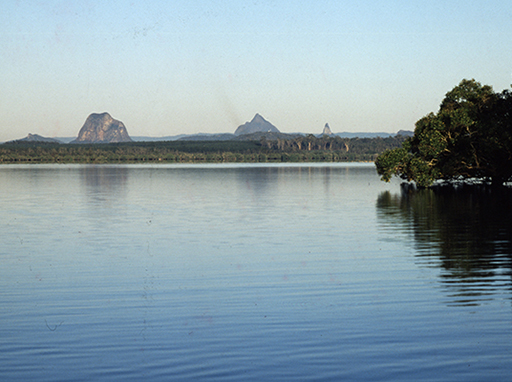Wildflowers
The Wallum was a moisture retentive sandy wilderness where tea trees flourished along the coastal line
The Wallum was a moisture retentive sandy wilderness where Tea trees flourished running parallel with much of the coastal line. Areas around Caloundra and Currimundi, out towards Meridan Plains the low lying plains behind Coolum and Peregian Beach were all parts of the coastal lowlands known to wildflower observers as Wallum country.
Cotton Tree was named after the native plant Hibiscus Diversifolius which once flowered prolifically in that region. Golden Beach was named after the golden blooms of Wattles which flowered along and around Pumicestone Passage. Old timers tell of the native Boronia growing thickly across the flood plain between the Maroochy River and the area then known as North Beach, now Mudjimba Beach.
Wildflowers had many uses for our early pioneers. During the hard times of the Great Depression, Boronia and Bluebells made pretty posies for mothers and girlfriends. During the early 1920s right up until the 1950s, local residents collected wildflower blooms to earn a little money when jobs were few. Bunches of wildflowers including Christmas Bells were sold for approximately 20 cents a bunch at local railway stations and were also sent by rail to be sold at the Brisbane Markets.
Paperbarks were useful for early settlers for thatching their slab huts and to make mattresses. The fluff from the native Kapok Tree was used to make a comfortable pillow after a hard day’s work. Our local Banksia, which is a hardy low compact shrub of the Wallum plains, bursts with seed pods providing food for native birds. The Beach She-Oak, whose seeds are also favoured by our native birds, can quench thirst when young branches are chewed.
During the 1950s and 1970s many of the region’s residents campaigned against land clearing. One of those was Caloundra’s formidable campaigner Kathleen McArthur, a defender of the natural environment who was posthumously named Sunshine Coast's Citizen of the Century in 2002. She was also a gifted wildflower artist and author. In 1962, Kathleen co-founded the Wildlife Preservation Society of Queensland. Kathleen's home, ‘Midyim’, near Kings Beach was named after the native sandberry and was hidden behind Paperbark trees, Tallowwoods and Pandanus.
Midyim was the first native garden in Caloundra. Kathleen campaigned for the preservation of Pumicetone Passage and the wildflowers of the Coast. She was born in Brisbane in 1915 to Catherine Durack of the pioneer pastoral family. Her father was Colonel Dan Evans, co-founder of the engineering firm Evans Deakin in Brisbane. She spent most of her life as a protector of South East Queensland's waterways, beaches, wildlife and landscape. Kathleen McArthur was known as the Lady of the Wildflowers.
From late July until August wildflowers will start to peep through for us to enjoy their beautiful blossoms. As you visit our bushland or beaches keep an eye out for native orchids or wildflowers getting ready to become a spring time bloom.
Thanks to Sunshine Coast Council’s Heritage Library Officers for the words and Picture Sunshine Coast for the images.
